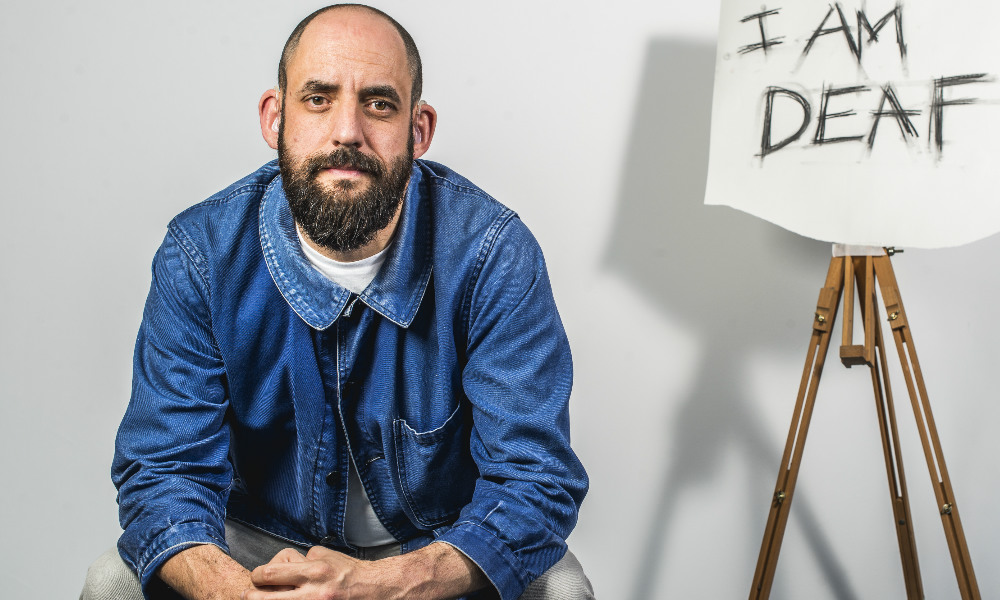
 (3.5 / 5)
(3.5 / 5)
Jonny Cotsen is sat at a desk with a laptop open in front of him. Music is on, he walks to the mic at the centre of the stage, he nods to the beat, opens his mouth, nothing comes out. Jonny is deaf and the hearing world has barriers to him. In his show, Louder Is Not Always Clearer, he takes us into his world. Jonny’s world is a world of rhythm and movement. He owns the stage with his humorous and dynamic presence. He seduces the audience with movement, sound, and words, some said, some written. Louder Is Not Always Clearer makes you experience with your body the difficulty of communicating across the deaf and hearing world.
Jonny grew up in a family that sought to minimise his disability. His parents always referred to his disability in terms of being ‘of partial hearing,’ never ‘deaf.’ Jonny’s show is a journey to own the term ‘deaf’ and to demystify it for all of us. As Jonny shows us his efforts at learning the sounds to be used in words, like ‘pa,’ ‘oo/ee,’ ‘th,’ ‘sh,’ ‘th,’ it feels like Ionesco’s La Cantatrice Chauve. Paradoxically, the slightly absurdist style of the first part of the show communicates effectively the impossibility of communication. We drown in sounds. We are overwhelmed.
Jonny lets us into his world with pathos and humour. He gives us funny ‘impressions’ of hearing people being condescending, patronising, and impatient. The show succeeds at making the audience experience the frustration, awkwardness, and loneliness of not being able to hear in a world of hearing people. I would have liked Jonny to take it further and explore the complexity of human communication, what is taken for granted in the words we use, our miscommunication, and bad communication. In the age of texts and emojis, of social media, and of multilingual people, deafness can shine a light on how we connect and disconnect with each other.
